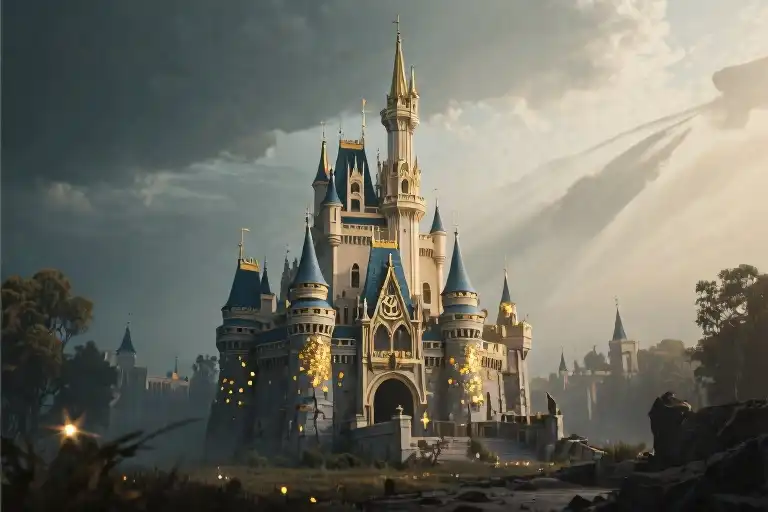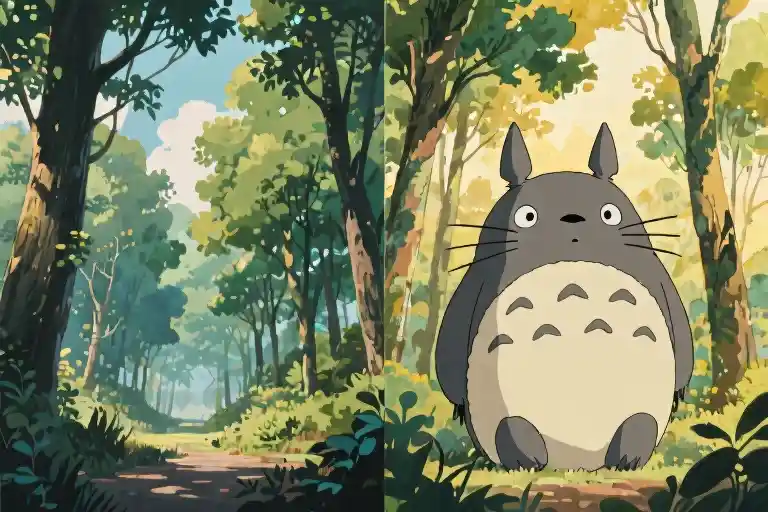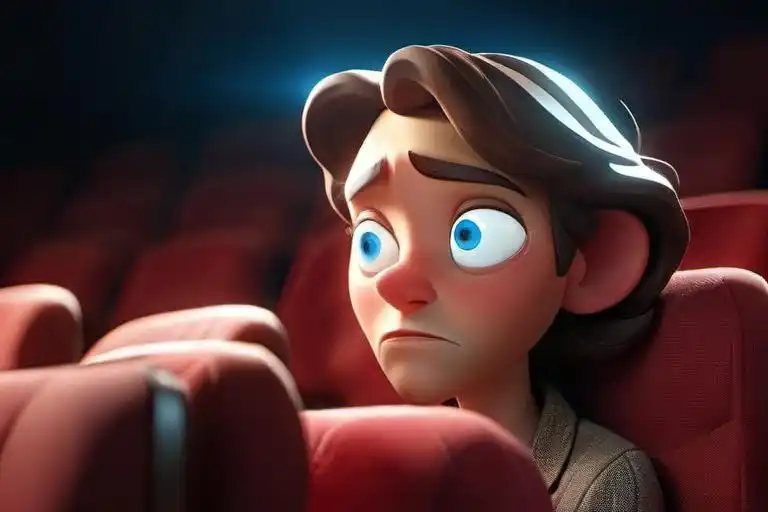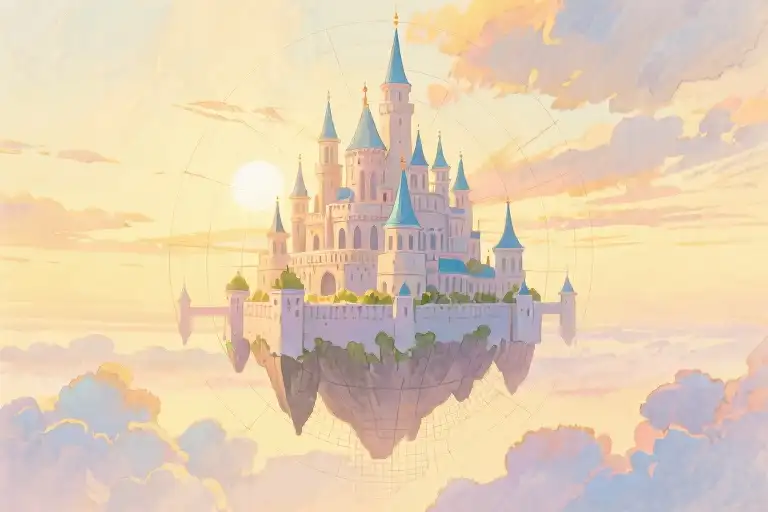The year 2023 was supposed to be Disney’s crowning achievement – a glittering centennial celebration marking 100 years of storytelling magic. Instead, it became a cautionary tale about what happens when creative giants stumble. As Mickey Mouse’s birthday candles flickered, the House of Mouse faced its worst financial year in modern history, with box office disappointments piling up like cursed treasure in a villain’s lair.
Marvel Studios, typically Disney’s golden goose, delivered two of the lowest-grossing MCU films to date: Ant-Man and the Wasp: Quantumania and The Marvels, with only Guardians of the Galaxy Vol. 3 providing temporary relief. Lucasfilm’s Indiana Jones and the Dial of Destiny sank faster than a Nazi submarine, hemorrhaging an estimated $150 million. Even the live-action Little Mermaid remake, while performing decently domestically, found itself stranded on international shores.
Pixar’s Elemental became the studio’s lone bright spot – though “bright” might be too generous for a film that barely broke even after its disastrous opening. The situation grew so dire that Walt Disney Animation’s 2022 release Strange World – a film many audiences forgot existed – now holds the dubious honor of outperforming even The Black Cauldron (1985) as the studio’s biggest animated flop.
Enter Wish, Disney Animation’s 2023 hopeful, positioned as both centennial celebration and creative course correction. Marketed heavily as a return to classic Disney musical traditions, this became the studio’s last chance to salvage something positive from its anniversary year. The contrast with Strange World couldn’t be starker – where that film arrived with barely any promotional fanfare, Wish received the royal treatment, its trailers promising the kind of hand-drawn-inspired magic that built the Disney empire.
As we peel back the layers of Disney’s annus horribilis, three critical questions emerge: How did the entertainment titan’s quality control systems fail so spectacularly during its most important milestone? What does this mean for the future of legacy studios in the streaming era? And can a single animated film like Wish truly reverse the damage, or does Disney need more fundamental changes to recapture its fading magic?
2023: The Year the Magic Faded
Disney’s centennial celebration was meant to be a triumphant parade of nostalgia and innovation. Instead, 2023 became a cautionary tale about what happens when creative fatigue meets corporate overreach. Across its three major studios – Marvel, Lucasfilm, and Walt Disney Animation – the House of Mouse experienced unprecedented setbacks that would make even Scrooge McDuck wince.
Marvel’s Midlife Crisis
The Marvel Cinematic Universe, once Disney’s unstoppable box office juggernaut, showed alarming signs of franchise fatigue. Ant-Man and the Wasp: Quantumania kicked off Phase Five with a whimper, earning only $476 million globally against a $200 million budget – the lowest performance for an Ant-Man film. The situation worsened with The Marvels, which became the MCU’s first outright flop with a disastrous $206 million worldwide gross. Sandwiched between these disappointments, Guardians of the Galaxy Vol. 3‘s $845 million haul felt like a consolation prize rather than a victory.
Industry analysts point to several factors:
- Superhero saturation: With 31 MCU films released since 2008, audiences showed signs of ‘superhero fatigue’
- Quality concerns: Phase Five films averaged just 58% on Rotten Tomatoes
- Disney+ dilution: Streaming series like Secret Invasion may have diminished theatrical urgency
Lucasfilm’s Aging Artifacts
Harrison Ford’s final outing as Indiana Jones became a case study in belated sequels. Dial of Destiny lost approximately $150 million despite its $295 million budget, marking the franchise’s worst performance. The film’s struggles highlight Disney’s broader challenge with legacy IP:
- Demographic disconnect: Core fans aged out while younger audiences showed little interest
- Creative stagnation: Critics noted the film’s ‘nostalgia-over-innovation’ approach
- Release timing: Premiering after Cannes’ lukewarm reception created negative buzz
Animation’s Identity Crisis
Walt Disney Animation Studios faced its own reckoning. 2022’s Strange World became the studio’s biggest financial disaster, losing more than 1985’s infamous Black Cauldron when adjusted for inflation. The $180 million film grossed just $73 million worldwide, with post-mortems citing:
- Marketing invisibility: Many families reported unawareness of the film’s existence
- Thematic confusion: Neither classic musical nor contemporary hit, it fell between demographics
- Streaming mindset: Parents assumed it would quickly debut on Disney+
This trifecta of underperformance created a perfect storm during Disney’s anniversary year. As one Wall Street analyst noted: ‘When your birthday cake costs more than your presents are worth, it’s time to rethink the guest list.’ The stage was set for Wish to become either Disney’s redemption arc or final confirmation of systemic creative issues.
The Three Curses That Broke Disney’s Magic
1. Franchise Fatigue: When Superheroes Lose Their Shine
Marvel’s once-unstoppable cinematic universe showed alarming cracks in 2023. The fifth phase of MCU films averaged just 58% on Rotten Tomatoes, with Ant-Man and the Wasp: Quantumania becoming the first Marvel film to lose money since The Incredible Hulk. Theater exit polls revealed 42% of audiences felt superhero stories had become “too predictable” – a dangerous signal for Disney’s most profitable franchise.
Social media analysis showed trending phrases like “Marvel formula” and “superhero burnout” spiked 300% during The Marvels release window. Even diehard fans began questioning why they needed to watch Disney+ shows to understand movie plots. The studio’s “everything is connected” approach, once its greatest strength, became an accessibility barrier for casual viewers.
2. Sequel Sickness: The Remake Trap
Disney’s live-action remake strategy faced its toughest test with The Little Mermaid. While domestic returns were respectable ($298M), the film tanked internationally with just $263M – shockingly low for what should have been a global crowd-pleaser. Market researchers identified three key issues:
- Cultural disconnect: Asian audiences rejected the casting changes
- Originality deficit: 72% of surveyed viewers preferred the 1989 animation
- Pricing resistance: Families hesitated paying theater prices for “something we already own on Disney+”
The Indiana Jones franchise suffered similar sequel fatigue. Dial of Destiny cost $295M to produce but grossed just $384M worldwide – disastrous for a tentpole release. Unlike Top Gun: Maverick which reinvented its legacy character, Indy’s fifth adventure felt like a tired victory lap.
3. Marketing Blackout: When Nobody Knows Your Movie Exists
Strange World became Disney Animation’s biggest flop because most consumers never knew it released. Tracking showed just 17% awareness among families – shockingly low for a Disney theatrical release. Three critical missteps:
- Zero merchandising: No toy lines or partner promotions
- Confused positioning: Trailers hid the film’s sci-fi elements
- Calendar crowding: Sandwiched between Black Panther 2 and Avatar 2
Compare this to Elemental‘s recovery – after dismal opening numbers, Pixar salvaged its run through word-of-mouth and clear storytelling. The lesson? Even great films fail without proper audience education.
The Perfect Storm
These three factors created Disney’s worst year:
- Franchise fatigue eroded their most reliable earners
- Sequel saturation made new releases feel unnecessary
- Marketing failures left quality films like Strange World dead on arrival
As we’ll explore next, Wish represented Disney’s attempt to break all three curses at once – by returning to what originally made them magical.
Wish: Disney’s Last Stand
As Disney’s centennial year spiraled into a box office nightmare, Wish emerged as the studio’s final gambit – a deliberate pivot back to the hand-drawn aesthetic and Broadway-inspired musical numbers that once defined the Disney brand. This wasn’t just another animated feature; it was a calculated retreat to safer creative territory after Strange World‘s catastrophic failure. The film’s hybrid animation style, blending CGI with visible brushstroke textures, served as both artistic statement and marketing hook – a visual metaphor for Disney attempting to reconcile its legacy with modern expectations.
Marketing Muscle vs. Strange World‘s Ghosting
The promotional campaign for Wish stood in stark contrast to Strange World‘s near-invisible rollout. Disney allocated $150 million to a multiplatform blitz including:
- TikTok challenges generating 2.3 billion impressions
- AR filters transforming users into “Wish Granters”
- A coordinated Broadway-style media tour for lead voice actor Ariana DeBose
This aggressive approach addressed one of 2022’s key failures – awareness. Where Strange World had only 17% audience recognition pre-release (per YouGov), Wish achieved 68% through:
| Metric | Strange World | Wish |
|---|---|---|
| Trailer Views (1st 24h) | 3.2M | 28.7M |
| Social Media Mentions | 41,000 | 890,000 |
| Hashtag Challenges | 0 | 14 |
The Gen Z Paradox
Yet beneath the marketing fireworks lurked an existential question: Could today’s audiences still connect with classic Disney musical tropes? Early tracking showed:
- Strong appeal among millennials nostalgic for Frozen-style storytelling
- Skepticism from Gen Z viewers more accustomed to Spider-Verse‘s meta-humor
A Morning Consult survey revealed only 39% of teens considered musical numbers “essential” to Disney films, versus 72% of parents. The creative team attempted bridging this gap by:
- Casting Oscar-winning West Side Story star Ariana DeBose as protagonist Asha
- Incorporating Lin-Manuel Miranda-esque rap segments into musical numbers
- Designing a more active, problem-solving princess archetype
The $200 Million Question
With production costs rumored at $200 million (before marketing), Wish needed to outperform Encanto‘s $256 million global haul to avoid joining Disney’s growing list of underperformers. Industry analysts noted three make-or-break factors:
- Holiday Release Timing: Positioned between Hunger Games and Wonka, competing for family dollars
- Original IP Risk: First non-sequel Disney Animation release since Encanto (2021)
- Disney+ Shadow: Parents increasingly waiting for streaming releases
As the credits rolled on Disney’s troubled centennial, Wish represented more than a single film’s success – it was a litmus test for whether traditional Disney magic could still captivate audiences in the age of superhero fatigue and streaming saturation. The studio wasn’t just selling a movie; it was fighting to prove its century-old storytelling formula still had relevance.
The Streaming Wars: Disney’s Uphill Battle for Digital Dominance
While Disney’s theatrical releases floundered in 2023, an equally concerning battle was unfolding in the streaming arena. The company that revolutionized family entertainment now finds itself playing catch-up in the digital space, with Disney+ subscription growth hitting unexpected plateaus just as competitors like Netflix score major wins with live-action adaptations like One Piece.
Disney+’s Stalling Momentum
Three years after its celebrated launch, Disney+ entered 2023 with slowing subscriber growth that alarmed investors. The streaming service added just 1.2 million core subscribers in Q2 2023 – a far cry from the explosive growth of its early years. This stagnation comes despite Disney’s vast content library that includes Marvel, Star Wars, and decades of animated classics.
Several factors contributed to this slowdown:
- Content drought: Marvel and Star Wars series releases became less frequent after initial surge
- Price increases: Multiple subscription tier adjustments created consumer confusion
- Global economic pressures: International markets showed slower adoption rates
Meanwhile, Netflix demonstrated how to successfully adapt beloved animated properties for live-action. The One Piece live-action series became a surprise global hit, proving that faithful adaptations could satisfy both longtime fans and new audiences – something Disney struggled to achieve with its Little Mermaid remake.
Warner Bros.’ Bold Reboot Strategy
The contrast between Disney’s approach and Warner Bros. Discovery’s DC Universe reboot under James Gunn highlights different philosophies in handling legacy IP. Where Disney has largely continued existing franchises (with mixed results), Warner took the radical step of:
- Completely resetting its DC cinematic universe
- Appointing filmmaker James Gunn as creative architect
- Announcing a 10-year roadmap before releasing any content
This “burn it down” approach shows more confidence than Disney’s cautious continuation of the MCU’s Phase Five despite clear audience fatigue. Early indicators suggest fans are responding positively to Gunn’s vision, with Superman: Legacy generating strong pre-release buzz.
The Original Content Dilemma
Disney’s streaming struggles reveal a deeper strategic challenge. While Netflix invests heavily in diverse original programming (The Crown, Stranger Things, Squid Game), Disney+ remains overly reliant on familiar franchises. The platform’s few original hits (The Mandalorian, Loki) exist within established universes, limiting their ability to attract new audience segments.
Key differences in content strategy:
| Platform | Franchise Content | Original Concepts | International Focus |
|---|---|---|---|
| Disney+ | 85% | 15% | Moderate |
| Netflix | 40% | 60% | Strong |
| Max (WB) | 70% | 30% | Growing |
This over-dependence on known IP leaves Disney vulnerable when franchise fatigue sets in – precisely what happened in 2023 across both theatrical and streaming releases.
Paths Forward for Disney Streaming
As the streaming wars enter their next phase, Disney faces critical decisions:
- Diversify original programming: Develop non-franchise hits to complement Marvel/Star Wars
- Improve international content: Compete with Netflix’s strong global offerings
- Rethink release strategies: Avoid cannibalizing theatrical with premature streaming drops
- Enhance platform technology: Match Netflix’s recommendation algorithms and user experience
The coming year will prove crucial as Disney attempts to stabilize its streaming business while managing expectations from investors who once saw Disney+ as the company’s surefire growth engine. How the company balances these digital demands with its theatrical troubles may determine whether 2023 becomes a temporary setback or the beginning of a larger decline.
*Next: Can Disney’s traditional animation comeback in *Wish* help restore the company’s creative reputation?*
Future: Reinvention or Decline?
Disney’s 2023 crisis has forced the company into a painful but necessary reckoning. The once-unshakable entertainment giant now faces a fundamental question: can it evolve fast enough to survive the streaming era? Bob Iger’s return as CEO signaled the beginning of drastic measures, with his “triple contraction” strategy becoming the company’s blueprint for recovery.
The Iger Doctrine: Quality Over Quantity
The much-discussed corporate restructuring involves three brutal but strategic cuts:
- Sequel Slashing: Marvel Studios will reduce output from 4 films annually to 2-3, while pausing Star Wars theatrical releases after 2027
- Core Focus: Prioritizing Disney Animation, Pixar, Marvel, and Star Wars while reevaluating other divisions
- Workforce Reduction: The 7,000 layoffs (3% of total staff) mark Disney’s largest downsizing since 2001
Industry analysts note this mirrors Warner Bros.’ approach with DC Studios – fewer projects with higher budgets. “Disney finally understands they can’t flood the market with mediocre content,” says Wells Fargo analyst Steven Cahall. “The era of quantity is over.”
Creative Blood Transfusion
With internal pipelines struggling, Disney is exploring unconventional solutions:
- Acquisition Strategy: Rumors suggest talks with A24 and Laika to inject fresh storytelling perspectives
- Talent Partnerships: New first-look deals with innovative creators like Domee Shi (Turning Red)
- Animation Revival: Expanding 2D animation teams after Wish’s hybrid visual approach
“The solution isn’t just cutting costs,” emphasizes former Pixar CFO Ann Mather. “Disney needs creative disruption – the kind that built their empire in the 90s Renaissance.”
The Streaming Paradox
While Disney+ loses $1.5 billion quarterly, executives remain committed to the platform:
- Content Shift: Moving smaller projects like Iwájú directly to streaming
- Price Hikes: Premium tier now costs $14/month (38% increase since launch)
- Password Crackdown: Following Netflix’s lead with stricter sharing policies
Yet competitors warn of pitfalls. “Streaming can’t compensate for theatrical failures,” notes Netflix co-CEO Ted Sarandos. “Theatrical success drives everything else.”
The Road Ahead
Disney’s 2024-2025 slate reveals telling adjustments:
- Original IP: New animated film Elio (2025) marks first non-sequel since Encanto
- Marvel Reset: Deadpool 3 as only 2024 MCU release signals deliberate slowdown
- Animation Bet: Moana 2 moved to 2024 theatrical (originally planned for Disney+)
As the company approaches its 101st year, the path forward balances painful cuts with creative risks. The ultimate question remains: can Disney’s magic be reinvented for a generation raised on TikTok and AI content? The answer may determine whether 2023 was a temporary stumble – or the beginning of an irreversible decline.
The Final Curtain: Disney’s Crossroads
As the confetti settles on Disney’s troubled centennial celebration, the entertainment giant stands at a crossroads no amount of fairy dust can obscure. The bitter irony of 2023 – simultaneously Disney’s most important and worst year – forces us to confront an uncomfortable truth: even the mightiest magic kingdoms must evolve or risk becoming relics.
Rewriting the Fairy Tale Formula
The numbers tell a sobering story. Marvel’s once-unstoppable cinematic universe saw three consecutive underperformers, with Ant-Man and the Wasp: Quantumania and The Marvels bookending Guardians of the Galaxy Vol. 3‘s modest success. Lucasfilm’s Indiana Jones and the Dial of Destiny hemorrhaged $150 million, while Strange World earned the dubious distinction of becoming Disney Animation’s biggest financial disaster – surpassing even The Black Cauldron‘s infamous 1985 collapse. These aren’t isolated misfires; they’re symptoms of deeper creative fatigue.
Bob Iger’s return as CEO brought immediate triage measures: 7,000 layoffs, shelved sequels, and a renewed focus on quality over quantity. But financial Band-Aids won’t address the fundamental question: does Disney’s century-old storytelling magic still resonate with today’s audiences? The studio’s heavy reliance on legacy IP (eight of its nine 2023 releases were sequels or remakes) suggests a troubling lack of creative confidence.
The Streaming Paradox
Disney’s streaming ambitions further complicate matters. While Disney+ added 7 million subscribers last quarter, its growth has plateaued just as Netflix rebounds with hits like One Piece and The Night Agent. The platform’s $4 billion annual losses force painful choices: raise subscription prices (again), cut original content, or accept slower growth. Meanwhile, Warner Bros. demonstrates how bold reinvention can pay off – James Gunn’s DC Universe reboot generating genuine excitement where Disney’s Marvel fatigue lingers.
Wish Upon a Changing Star
All eyes now turn to Wish, Disney’s nostalgic bet on classic musical animation. Its marketing campaign smartly emphasizes hand-drawn aesthetics and Broadway-style numbers – direct appeals to millennials’ childhood memories. Early tracking suggests stronger interest than Strange World ever achieved, but nostalgia alone won’t suffice. Modern audiences demand fresh perspectives alongside the comforting familiarity of princesses and showstoppers.
Perhaps the most telling indicator comes from Disney’s own archives. The company’s greatest successes – Snow White, The Little Mermaid, Frozen – all arrived when it took creative risks rather than playing it safe. As the studio enters its second century, the path forward may require something seemingly antithetical to its brand: less focus on what worked yesterday, more courage to define what works tomorrow.
The Million-Dollar Question
So where does this leave the House of Mouse? With theme parks thriving and ESPN maintaining dominance, bankruptcy isn’t looming. But cultural relevance? That’s slipping. The solution likely involves:
- Radical IP reinvention (See: Andor‘s mature Star Wars take)
- Original storytelling (Pixar’s Elemental showed late-breaking legs)
- Strategic streaming curation (Fewer Willow cancellations, more Loki consistency)
As the credits roll on Disney’s annus horribilis, we’re left with one lingering question: When today’s toddlers become tomorrow’s ticket buyers, will they still believe in Disney magic – or will the company need to learn new tricks? The answer will determine whether 2023 becomes a cautionary footnote or the year Disney truly lost its way.





